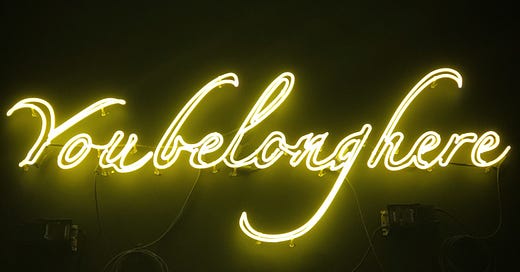I have a child who is different from other kids in ways that younger kids may not be aware of but older kids or parents would. He is neurodiverse rather than neurotypical. Since I’m new to the lingo but not new to parenting a child whose affect can quickly swing from joyous to distressed, I wonder if neurodiversity could describe the make-up of a society where we acknowledge that we are not all the same. We all understand that we all think, process, feel, self-regulate and connect to others in unique ways, and those differences are accepted and celebrated as gifts.
The notion that all humas were created as a facsimile of the Divine, is taken from the bible from the very first chapter verses 26 and 27: “And God said [to the celestial beings]: let us make a human in our image, after our likeness….And God created Adam in God’s image, [b’tzelem Elohim] in the image of God, God created him, male and female God created them. “
I have heard these lines taught many times as they relate to how we treat those around us or those who challenge us. Unsurprisingly, it is not difficult to find the Divine in those we love; we see it reflected in their eyes. But for those we may not feel such an attachment, it is helpful to remind ourselves where we all began: as a Divine notion with the greatest of potential with the imprint of the Divine upon us.
Sometimes, seeing a person as created ‘b’tzelem Elohim’ might be easier than seeing them as a complex human being. I think we can rather effortlessly accept that each life has infinite worth, that each person has great potential given the right set of circumstances. Yet it is also rather straightforward to consider those who are different as ‘other’, as ‘unacceptable’ in the society that we have created. Or perhaps they simply need to be trained to conform so that they can more easily be included. These are uncomfortable realities, and I truly appreciate the many efforts I have witnessed to create supportive and loving environments for the neurodiverse in my personal and professional settings. But I still wonder what ‘inclusion’ really means.
Jewish institutions have been considering how they greet people who enter their spaces. Work by Ron Wolfson in his book, The Spirituality of Welcoming, has been so instrumental in changing cultures to allow more people, members and guests alike, to feel seen and welcomed. Often assumptions are made about those who may not look like everyone else or new people often feel on the periphery; taking steps to change makes a big difference, which is important considering the emphasis that’s placed on community building. But not everyone feels included, and sometimes those are people who have a child that is different. And of course, the children themselves.
Jacob Artson, a young man with autism who communicates using a computer, has presented and written about his experiences in Jewish communities. He has felt either unseen or viewed as a disturbance because of the way he prays and expresses emotions until he found communities who were willing to see him as a person first. He claims that in order to be inclusive of people with disabilities, we actually need to practice a more radical form of welcoming by including people of all backgrounds, races, genders, experiences etc who want to safely join our communities and be part of its mission.
While people might think that folks with disabilities are not aware of those around them, Jacob argues that it is the opposite. He is very aware of others and encourages us to take the first step by simply smiling. A smile can close a seemingly wide chasm and makes a large difference. But that is only the beginning. He offered examples of how he was invited to participate in all the facets of the congregation and not only the elements that related to people with differences. His fellow congregants got to know him and understood his unique ways of being in their midst.
We find ourselves at an incredible moment of opportunity. Institutions that have been mostly closed since March 2020 are planning to welcome people back en masse. Why not reimagine what it could look like to practice radical welcoming for all those who choose to return, to reexamine our values around inclusion, to move beyond the veneer and into forming deeper connections? And then once everyone has been ‘welcomed’ sufficiently, what are the messages and the practices that we put into place to demonstrate that this is a primary value? Perhaps it is only then that we can experience actual inclusion.



